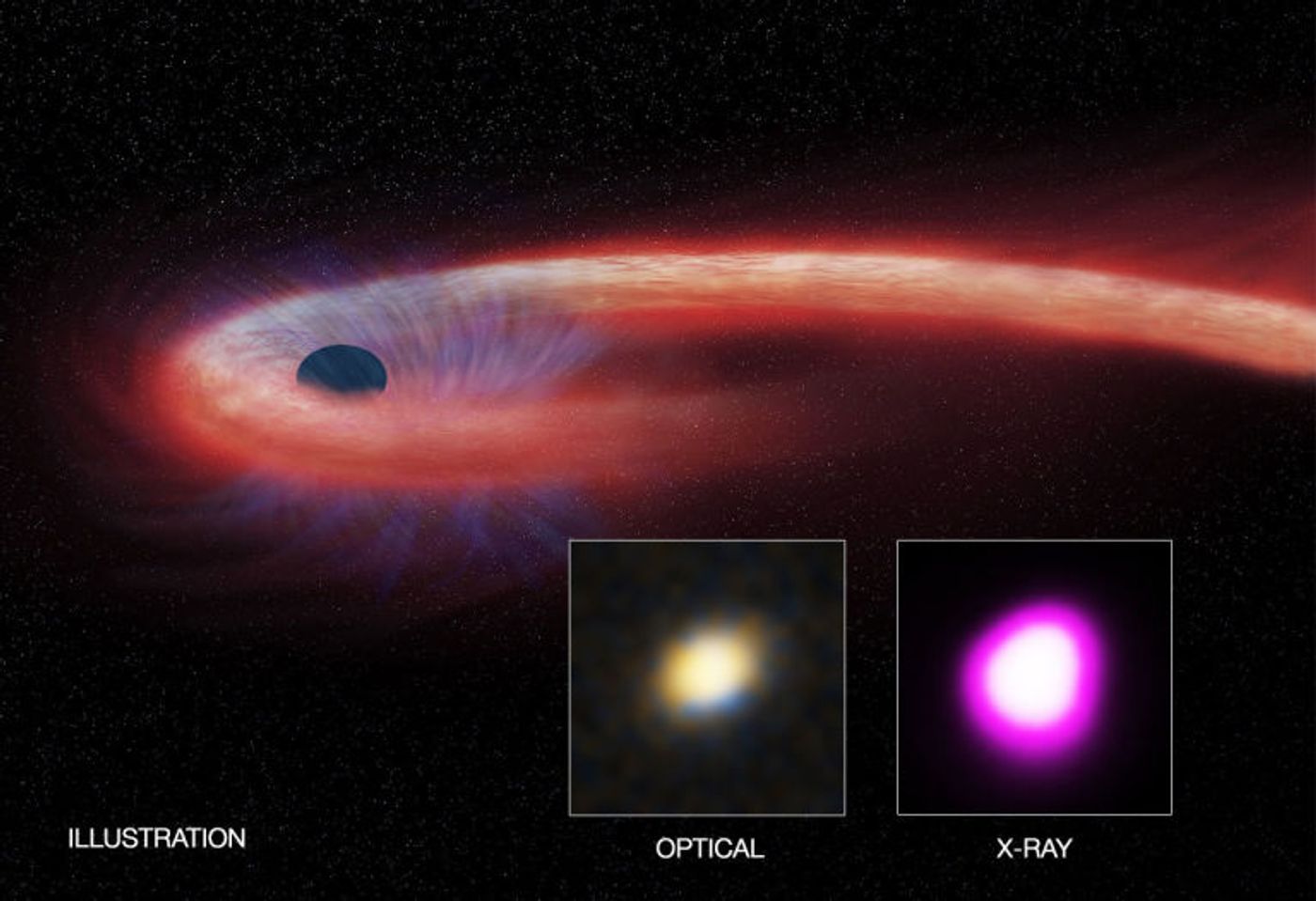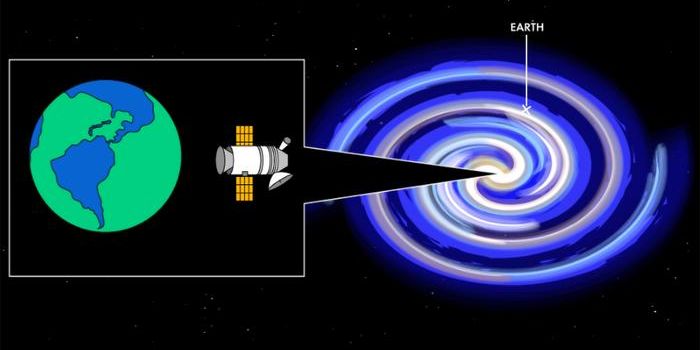Black Hole Shatters Record by Continually Munching on a Star for a Decade
Black holes are some of the universe’s strongest sources of gravitational forces. They are so powerful that they can even bend and pull light, and often times, that’s how we’re able to see them.
On the other hand, a recent study published in the journal Nature details X-rays being emitted from a black hole dubbed XJ1500+0154, which resides at the center of a small and distant galaxy some 1.8 billion light years away from Earth, and apparently it has been slowly devouring a star for the past decade that just happened to wander too close to it for comfort.
Image Credit: NASA/CXC/M.Weiss
For what it's worth, a full decade is the longest duration this kind of activity has ever been observed in a black hole in all of modern astronomy.
Researchers have been using NASA’s Chandra X-ray Observatory and Swift satellite, as well as the ESA’s XMM-Newton to come up with the findings, noting that while stars are often pulled into black holes by their immense gravitational pulls, it typically doesn’t take this long for the star to vanish completely.
"We have witnessed a star's spectacular and prolonged demise," said study lead author Dacheng Lin from the University of New Hampshire in Durham, New Hampshire. "Dozens of tidal disruption events have been detected since the 1990s, but none that remained bright for nearly as long as this one."
At these incredible distances from Earth, to be able to see these sources of light, they need to be very luminous. On the other hand, not only are XJ1500+0154’s X-ray sources luminous, but it has been so for a very long period of time.
In fact, experts believe that it has surpassed the Eddington Limit, suggesting that the growth of black holes could actually occur faster than previously thought. This discovery actually pushes against our current understanding of the mysterious physics behind black holes, which potentially helps astrophysicists in understanding how some black holes came to exist so early in the universe and how they’re able to get so dense and large.
While this observation is undoubtedly groundbreaking for the astronomy community and sheds some light on some of the mysteries of black holes and how they work, there is still much to be learned about them. Black holes continue to baffle physicists with every new discovery.
Source: Chandra X-ray Observatory via Popular Mechanics









